I'm a bit behind in this journal, but don't those dark veins on the damaged leaves indicate a magnesium deficiency. Have you tried an epsom salts foliar spray?
Navigation
Install the app
How to install the app on iOS
How To Use Progressive Web App aka PWA On 420 Magazine Forum
Note: This feature may not be available in some browsers.
More options
You are using an out of date browser. It may not display this or other websites correctly.
You should upgrade or use an alternative browser.
You should upgrade or use an alternative browser.
FiveToMidnight's First Grow - Coco/Perlite - NL - MarsHydro 300W LED - 2015
- Thread starter FiveToMidnight
- Start date
-
- Tags
- fivetomidnight
- Thread starter
- #722
FiveToMidnight
Well-Known Member
I'm a bit behind in this journal, but don't those dark veins on the damaged leaves indicate a magnesium deficiency. Have you tried an epsom salts foliar spray?
No Blaze I can't say I have.
I'm using CalMag in every feed so I didn't think it would be a mag deficiency.
How would you advise to mix the spray and how much should be applied?
If you have been regularly supplementing with calmag then you should be good. Although I suppose something in your medium could be locking it out.
Do you feed/water every day, or do you alternate between feeding and watering?
I have a similar issue right now, although not as advanced as yours. Mine is from pushing the nutrients, and not watering enough causing a salt buildup in my coco. I feed/water every second day. I will continue to feed every second day with the same strength nutes but now I will water with calmag on the days I don't feed. So I will be increasing calmag as well as increasing the amount of water going through my medium.
Epsom salts is just magnesium sulfate. The fastest way to resolve a magnesium deficiency is to foliar spray with epsom salts. It won't hurt your plant, just don't spray it directly on your bud sites.
Just remember that I am not up to date on what you have already tried. So be careful with my advice, or the advice of anyone that jumps on to this thread in the later stages.
I see skybound has been giving you plenty of advice. Lets hear what he has to say about what I've just said.
If you have been noticing a steady improvement in your plants, then ignore my advice completely and just carry on doing what you're doing.
Do you feed/water every day, or do you alternate between feeding and watering?
I have a similar issue right now, although not as advanced as yours. Mine is from pushing the nutrients, and not watering enough causing a salt buildup in my coco. I feed/water every second day. I will continue to feed every second day with the same strength nutes but now I will water with calmag on the days I don't feed. So I will be increasing calmag as well as increasing the amount of water going through my medium.
Epsom salts is just magnesium sulfate. The fastest way to resolve a magnesium deficiency is to foliar spray with epsom salts. It won't hurt your plant, just don't spray it directly on your bud sites.
Just remember that I am not up to date on what you have already tried. So be careful with my advice, or the advice of anyone that jumps on to this thread in the later stages.
I see skybound has been giving you plenty of advice. Lets hear what he has to say about what I've just said.
If you have been noticing a steady improvement in your plants, then ignore my advice completely and just carry on doing what you're doing.
- Thread starter
- #724
FiveToMidnight
Well-Known Member
If you have been regularly supplementing with calmag then you should be good. Although I suppose something in your medium could be locking it out.
Do you feed/water every day, or do you alternate between feeding and watering?
I have a similar issue right now, although not as advanced as yours. Mine is from pushing the nutrients, and not watering enough causing a salt buildup in my coco. I feed/water every second day. I will continue to feed every second day with the same strength nutes but now I will water with calmag on the days I don't feed. So I will be increasing calmag as well as increasing the amount of water going through my medium.
Epsom salts is just magnesium sulfate. The fastest way to resolve a magnesium deficiency is to foliar spray with epsom salts. It won't hurt your plant, just don't spray it directly on your bud sites.
Just remember that I am not up to date on what you have already tried. So be careful with my advice, or the advice of anyone that jumps on to this thread in the later stages.
I see skybound has been giving you plenty of advice. Lets hear what he has to say about what I've just said.
If you have been noticing a steady improvement in your plants, then ignore my advice completely and just carry on doing what you're doing.
I feed twice daily as they dry out quickly.
I appreciate your help mate, they have been improving so I'll see how they go but I already have Epsom Salt so I'll keep your suggestions in my mind
All good if they have been improving. Means you're doing something right.
Good luck bud.
Good luck bud.
- Thread starter
- #726
FiveToMidnight
Well-Known Member
All good if they have been improving. Means you're doing something right.
Good luck bud.
Cheers mate. Yours are looking nice also. Keep it up
Camo420Grow
New Member
Awesome pics 5! That grow box is looking pretty sick with the mylar walls and led going in there !
- Thread starter
- #728
FiveToMidnight
Well-Known Member
Awesome pics 5! That grow box is looking pretty sick with the mylar walls and led going in there !
Thanks mate. I think the girls are looking better too
Skybound
Well-Known Member
If you foliar feed, do so like 5 minutes before lights off as droplets on leaves act as mini magnifying glasses under those lights and could possibly lead to more heat stress and burn spots.
- Thread starter
- #730
FiveToMidnight
Well-Known Member
If you foliar feed, do so like 5 minutes before lights off as droplets on leaves act as mini magnifying glasses under those lights and could possibly lead to more heat stress and burn spots.
I have also been reading that. I may not do it to these girls as there are a lot of flower spots that I don't want to ruin.
Thanks Skybound!
- Thread starter
- #731
FiveToMidnight
Well-Known Member
So after some reading I dropped the PPM down to about 450-550 to see if it would help the build up. It seemed to have worked, I'm not getting the insanely high ppm readings in runoff anymore. However the leaves are still slowly dying and I don't know why.
I have been adding 1.3ml per L of silica for the past 3 days and they still seem to be growing. But leaves that were nice and green on Saturday are now starting to yellow at the tips today.
One thing though, I managed to get the PH to move. Now sitting on 6.0
Here's some pics so you can see what I mean.
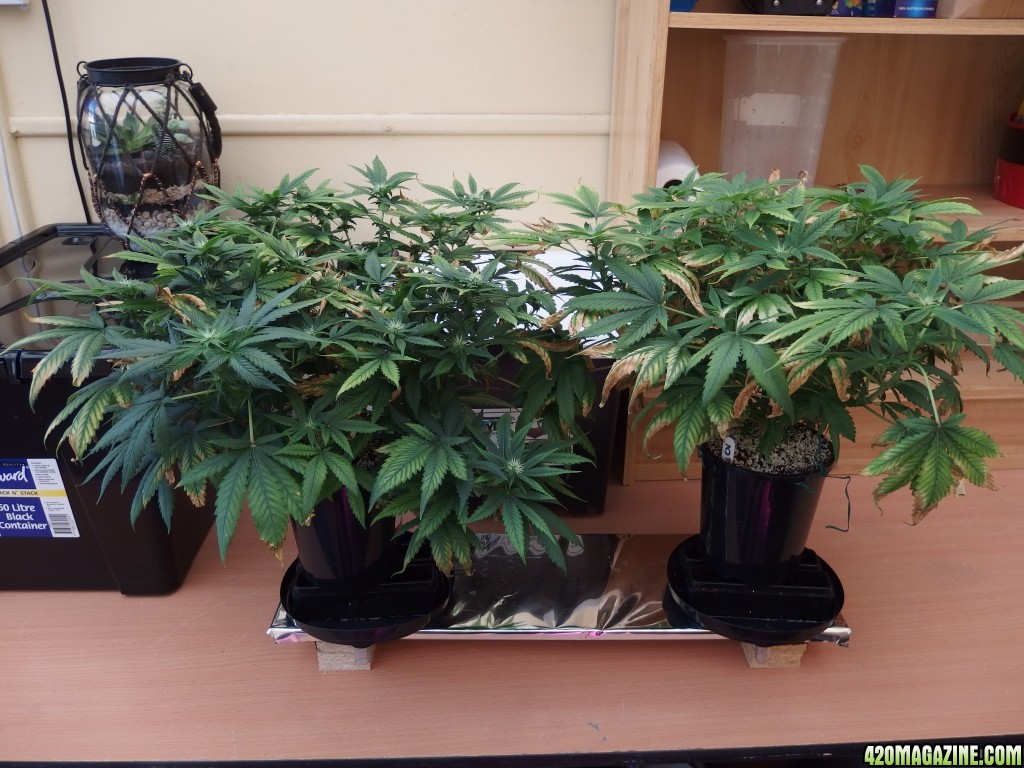
Number 1
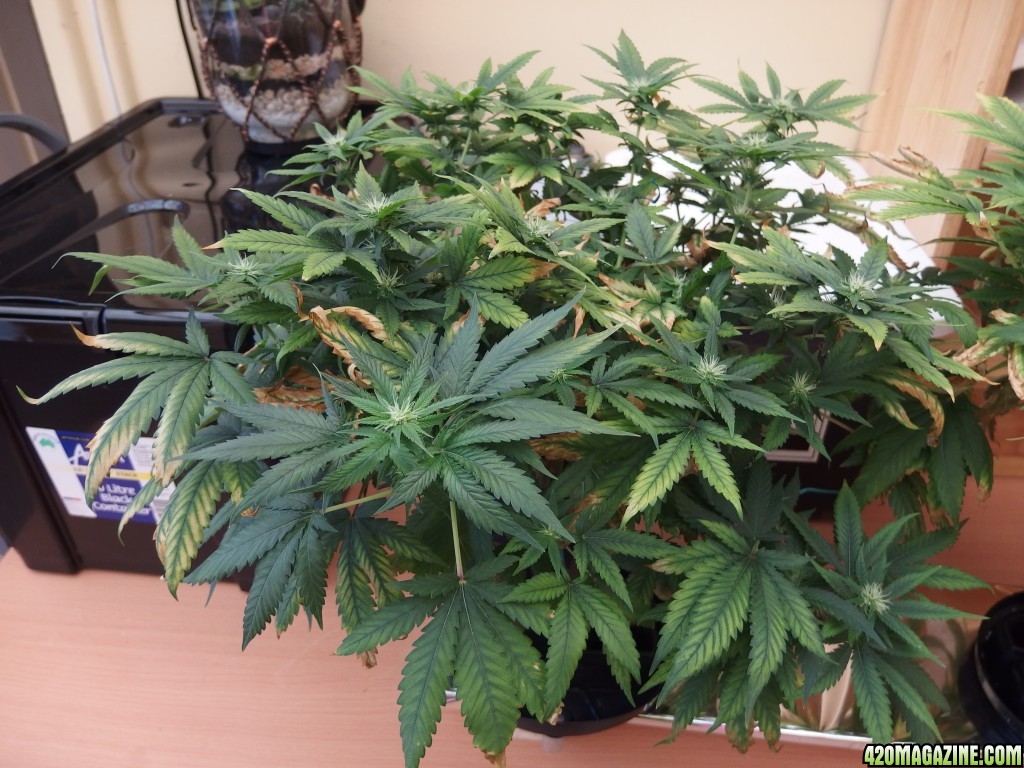
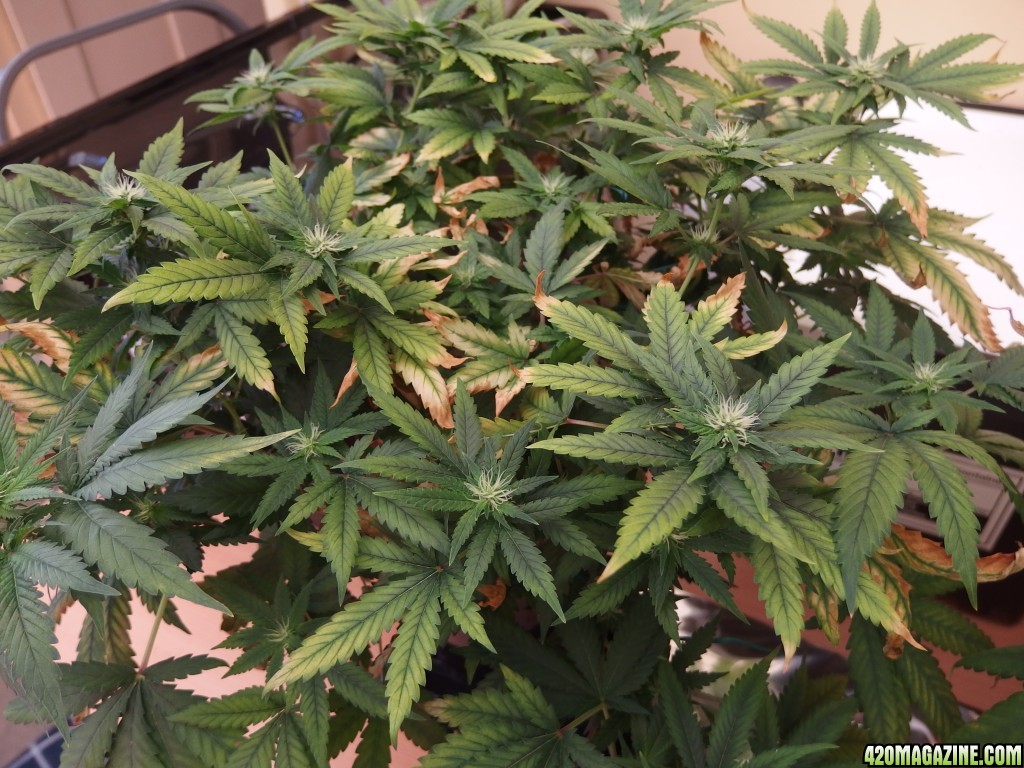
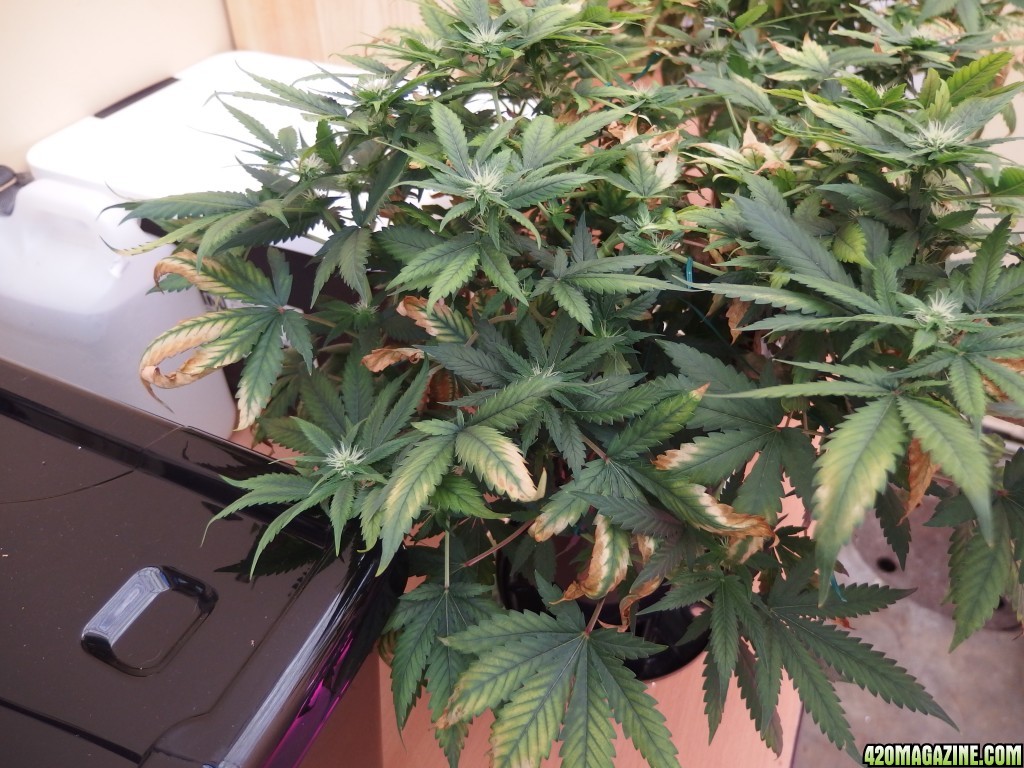
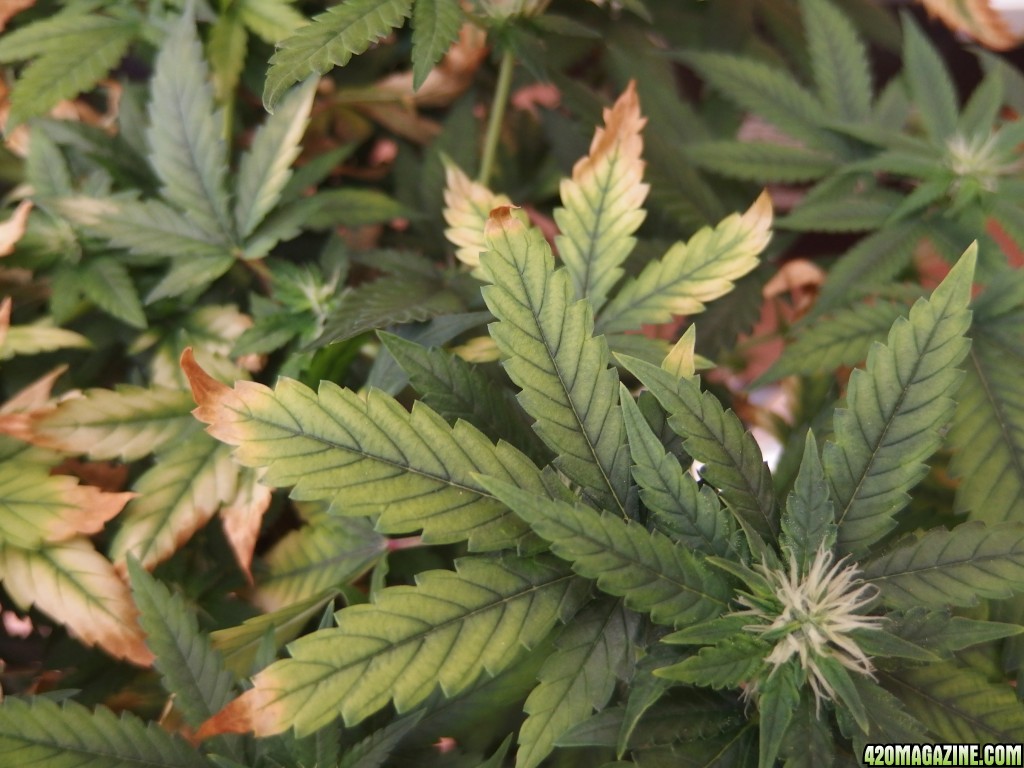
Number 3
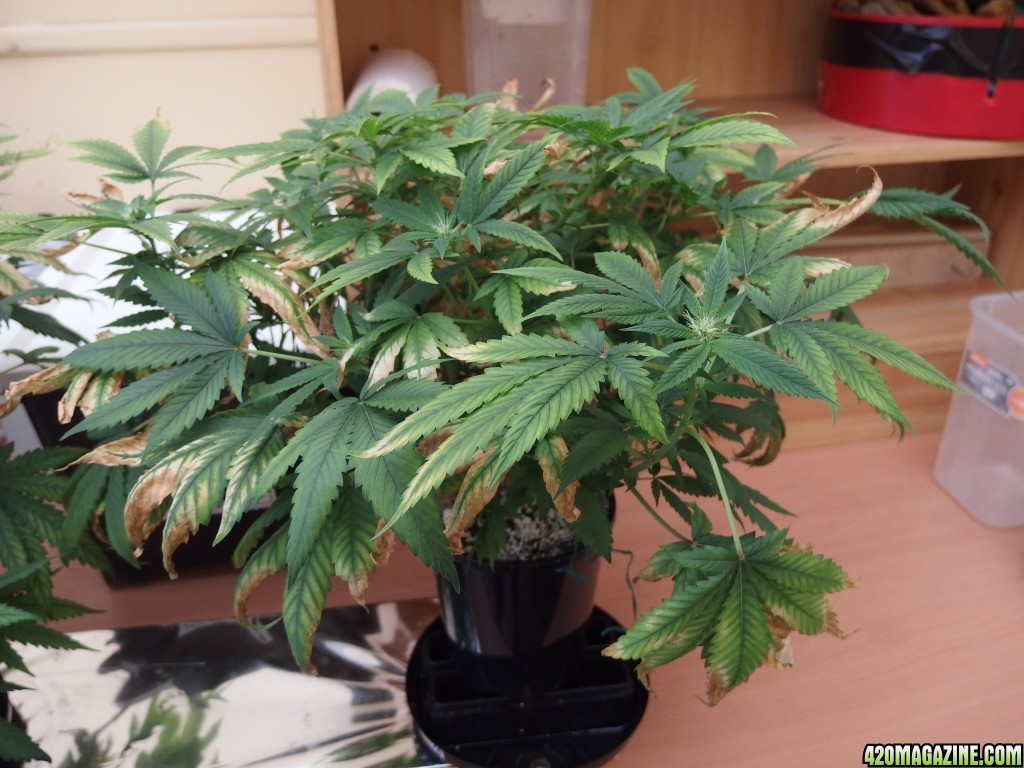
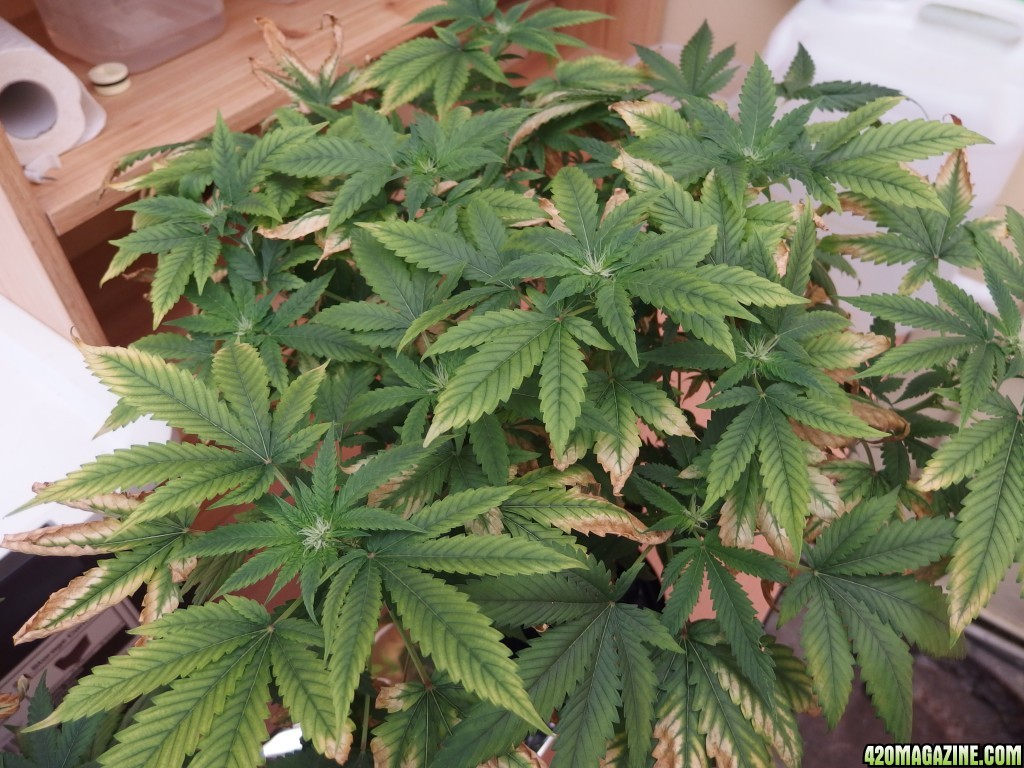
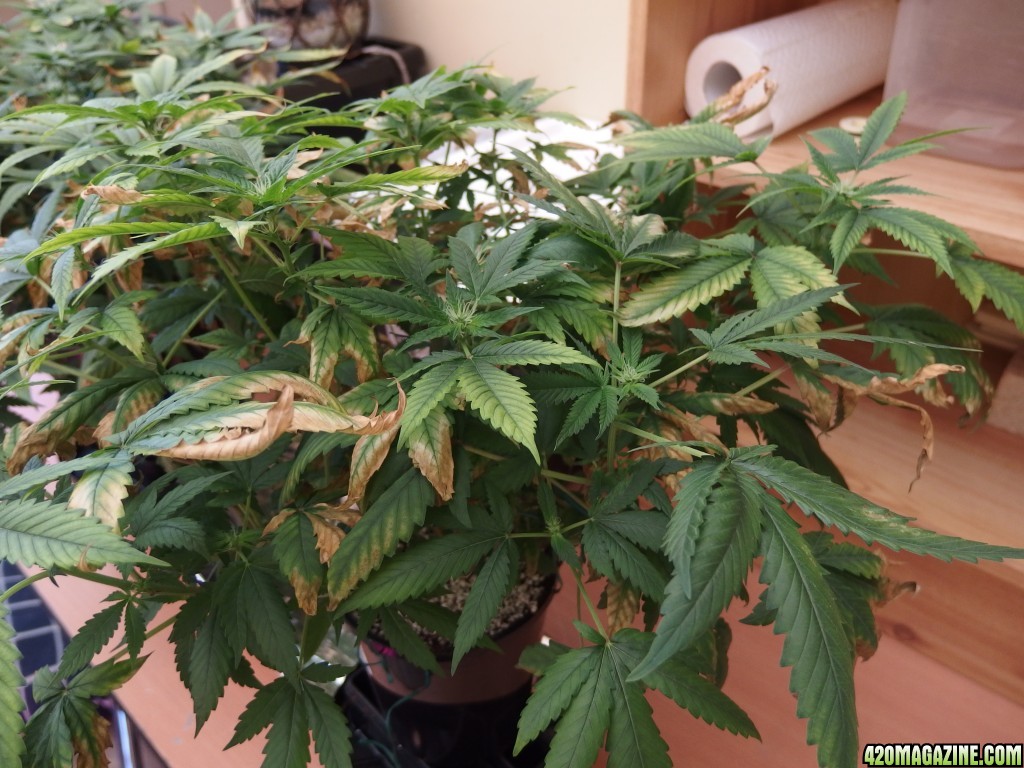
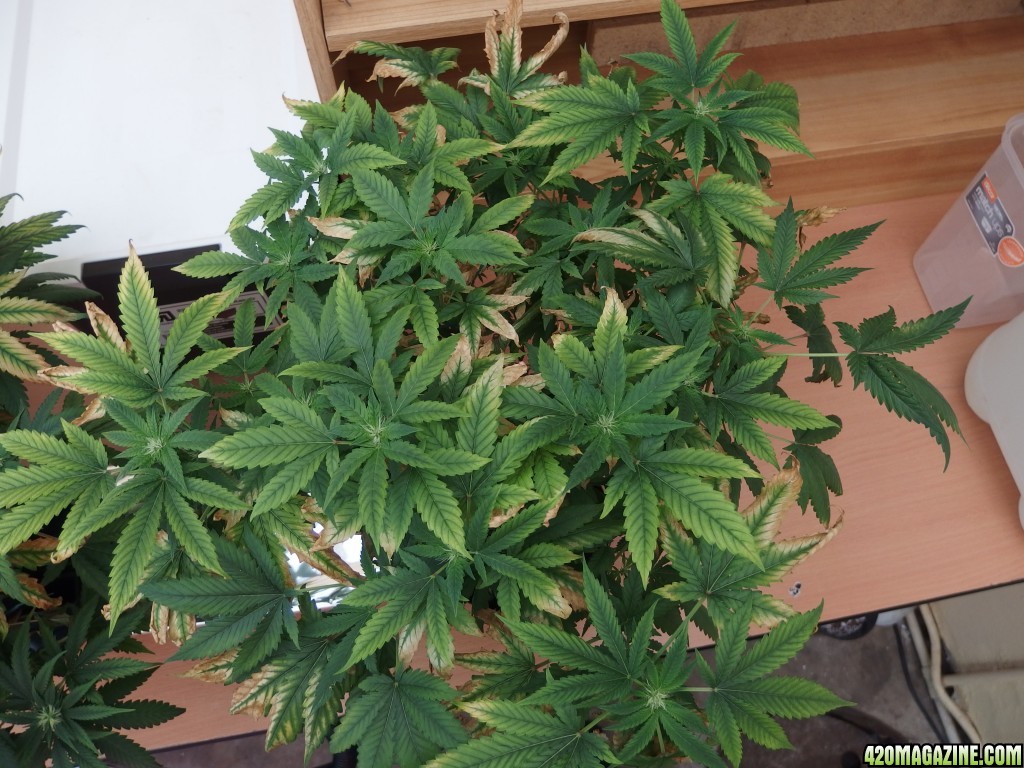
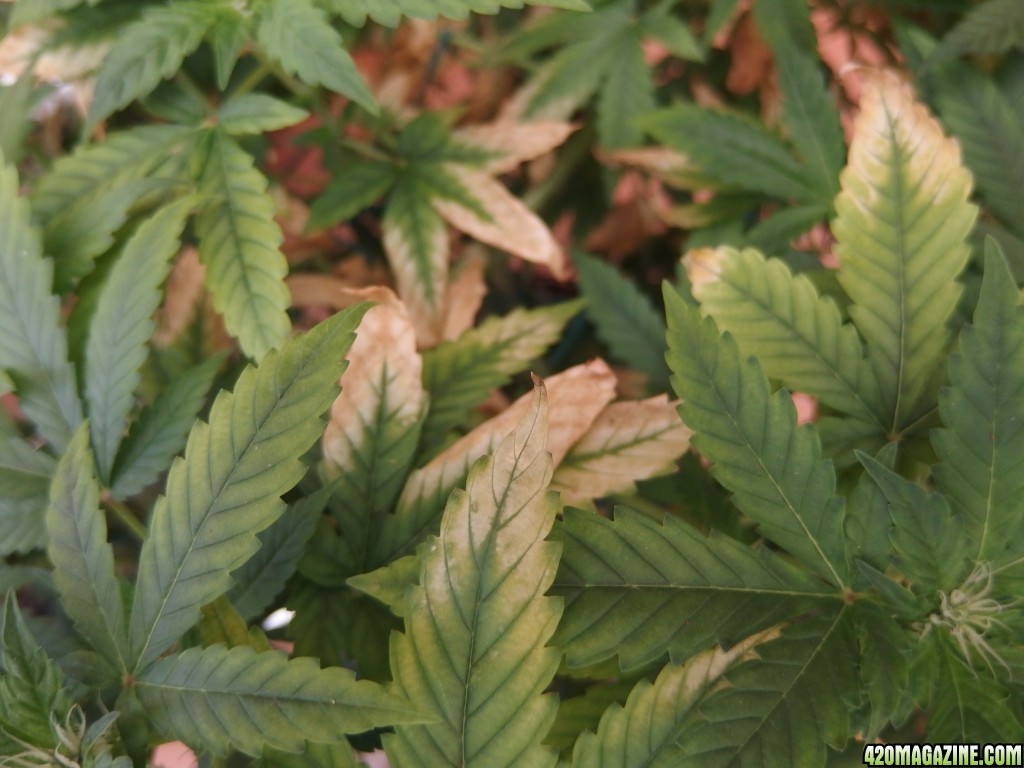
I have been adding 1.3ml per L of silica for the past 3 days and they still seem to be growing. But leaves that were nice and green on Saturday are now starting to yellow at the tips today.
One thing though, I managed to get the PH to move. Now sitting on 6.0

Here's some pics so you can see what I mean.
Number 1
Number 3
Mate I should have advised you to get some B52, as this would have been what your plant needs.. Speal on the back..It's a stress reviver, builds resistance to temp changes, builds stronger roots for nutrient uptake, increases enzymatic activity, increases plant growth rate, stamina, energy and maximises flower production. Creates an improved absorption of nutrients, boosts floral production and harvests. Supercharges your regular nutrient solution..
- Thread starter
- #733
FiveToMidnight
Well-Known Member
Mate I should have advised you to get some B52, as this would have been what your plant needs.. Speal on the back..It's a stress reviver, builds resistance to temp changes, builds stronger roots for nutrient uptake, increases enzymatic activity, increases plant growth rate, stamina, energy and maximises flower production. Creates an improved absorption of nutrients, boosts floral production and harvests. Supercharges your regular nutrient solution..
Thanks Grizzy, I'll add it to the list for next time. Sounds similar to what the silica is meant to do too
no mate not at all... I'm not really understanding the silica use now but anyways... Hope your plants come good. You could have had green ones though...
Skybound
Well-Known Member
[video=youtube;5FVP_Q3RRTU]
[/video]
- Thread starter
- #736
FiveToMidnight
Well-Known Member
[video=youtube;5FVP_Q3RRTU][/video]
I've been feeding with calmag every feed at 1.3ml/L. Could it somehow be locked out and not being taken in by the plants? I do agree it looks like a calmag deficiency but I don't know why that would be the case if I have been giving them calmag for ages now
- Thread starter
- #737
FiveToMidnight
Well-Known Member
Just had a thought.
When I mix the nutes I mix everything together with calmag and silica, then take a reading. I then add ro water to bring the ppm reading down to where I want it diluting the entire mix.
Should I instead work out how much ppm the calmag and silica add, then mix the base nutes, bring the ppm of that down to where it needs to be and then add the full 1.3ml of calmag and silica so as not to dilute the additives?
(I hope that makes sense, quite baked right now lol)
When I mix the nutes I mix everything together with calmag and silica, then take a reading. I then add ro water to bring the ppm reading down to where I want it diluting the entire mix.
Should I instead work out how much ppm the calmag and silica add, then mix the base nutes, bring the ppm of that down to where it needs to be and then add the full 1.3ml of calmag and silica so as not to dilute the additives?
(I hope that makes sense, quite baked right now lol)
Camo420Grow
New Member
Man 5 I wish I had an answer for you and was more knowledge of the plant. Cause I haven't seen a dude put so much time, effort, & care into their plants and they not come out looking green or at least finding a solution to the problem that's hurting their girls. It just seems like it's one thing after another with these girls. I hope someone smart comes along and maybe has an answer for you. Anyways at least your still baked 

Skybound
Well-Known Member
Silica needs gradual introduction and is better when done from the beginning. It is also supposed to be the first thing added to the plain water. I would add 1ml per every 3 liters you mix as a starting point and gradually work it up week to week till roughly week 5 and stop it all together. Next to get mixed in is your 1.3ml CalMag per liter and also increase it gradually towards 1.6 - 1.7 by week 5 and let that plateau till week 7 or 8.
Once those 2 amendments are added, get a ppm and PH reading. Deduct that number from your target ppm to know how much room you have left to fit in the 3 part as we don't want to exceed our target ppm by too much. It is somewhat odd that amendments are counted in ml/L whereas we finish our nutrient build by measuring ppm and using past experience in that area to help us try to guess exactly how much we can still add. This is where the "part" system comes in real handy. For example, if you were in mid bloom at 1/4/6 G/M/B, you can then use those numbers to know that as long as we keep those parts measured by the same base number, we can readjust that recipe to suit our needs. So then, if for instance you needed to decrease the strength by 65%, you can decrease the size of the lowest common denominator (1ml) to 0.65ml and multiply by the amount of parts to discover what the formula then becomes. 0.65ml times 4 parts equals 2.6 and 0.65 times 6 equals 3.9 which would make the recipe for our current needs to be
Gro - 0.65ml total
Micro - 2.6ml total
Bloom - 3.9ml total. Those same numbers can be reconfigured to give you ml/L, or just total ml added. Because I use gallons, I also further add to derive how many ml/gal times how many gallons which in my case was usually 12 gallons. I was always able to get within 50ppm of my target and I could then choose to add a bit more of correct portions of each to bump my reading up some, add water to dilute it some, or make the executive decision to leave things right where they are.
Once those 2 amendments are added, get a ppm and PH reading. Deduct that number from your target ppm to know how much room you have left to fit in the 3 part as we don't want to exceed our target ppm by too much. It is somewhat odd that amendments are counted in ml/L whereas we finish our nutrient build by measuring ppm and using past experience in that area to help us try to guess exactly how much we can still add. This is where the "part" system comes in real handy. For example, if you were in mid bloom at 1/4/6 G/M/B, you can then use those numbers to know that as long as we keep those parts measured by the same base number, we can readjust that recipe to suit our needs. So then, if for instance you needed to decrease the strength by 65%, you can decrease the size of the lowest common denominator (1ml) to 0.65ml and multiply by the amount of parts to discover what the formula then becomes. 0.65ml times 4 parts equals 2.6 and 0.65 times 6 equals 3.9 which would make the recipe for our current needs to be
Gro - 0.65ml total
Micro - 2.6ml total
Bloom - 3.9ml total. Those same numbers can be reconfigured to give you ml/L, or just total ml added. Because I use gallons, I also further add to derive how many ml/gal times how many gallons which in my case was usually 12 gallons. I was always able to get within 50ppm of my target and I could then choose to add a bit more of correct portions of each to bump my reading up some, add water to dilute it some, or make the executive decision to leave things right where they are.
- Thread starter
- #740
FiveToMidnight
Well-Known Member
Feeling pretty dumb right about now lol. I'm not sure if I misunderstood or what but I thought you added everything together and then diluted. I just keep telling myself the first attempt is where you make all your mistakes.
I did read that Silica should be introduced gradually but all directions I was able to find said about 1-2ml per L which made me think giving them 1.3ml was on the lower side of things.
I also know I am late in the process to be giving them Silica, I just thought it might be the best thing I could get to help give the girls a bit of a boost in their last few weeks or so. I have noted down your advice and will make sure it is applied next round. Still feel a bit dumb for getting it so wrong though.
Thank you for explaining how to achieve the right ppm readings, I am soo bad at working these things out. I didn't realise there would be so much maths and science type stuff to work out. Both topics have never been my strong suit hahaha
I believe the Early Bloom ratio with just the 3-Part on it's own gives a ppm of around 550. I'll have to see what the Silica and CalMag do but I'm thinking it will be around 300ppm as I usually get around 700ppm with it all together.
Could you possibly explain why certain additives are added before others. For example, you mentioned that Silica is the first thing to be added to the water, then CalMag and then the base nutes. Why is it in this order and how does one work out which one should be first and so on?
I would have thought that being they are all mixed together it wouldn't matter which one was mixed in when but it appears that this is not the case.
I did read that Silica should be introduced gradually but all directions I was able to find said about 1-2ml per L which made me think giving them 1.3ml was on the lower side of things.
I also know I am late in the process to be giving them Silica, I just thought it might be the best thing I could get to help give the girls a bit of a boost in their last few weeks or so. I have noted down your advice and will make sure it is applied next round. Still feel a bit dumb for getting it so wrong though.
Thank you for explaining how to achieve the right ppm readings, I am soo bad at working these things out. I didn't realise there would be so much maths and science type stuff to work out. Both topics have never been my strong suit hahaha
I believe the Early Bloom ratio with just the 3-Part on it's own gives a ppm of around 550. I'll have to see what the Silica and CalMag do but I'm thinking it will be around 300ppm as I usually get around 700ppm with it all together.
Could you possibly explain why certain additives are added before others. For example, you mentioned that Silica is the first thing to be added to the water, then CalMag and then the base nutes. Why is it in this order and how does one work out which one should be first and so on?
I would have thought that being they are all mixed together it wouldn't matter which one was mixed in when but it appears that this is not the case.
Similar threads
- Replies
- 225
- Views
- 16K
- Replies
- 166
- Views
- 18K
- Replies
- 22
- Views
- 7K
- Replies
- 121
- Views
- 21K


